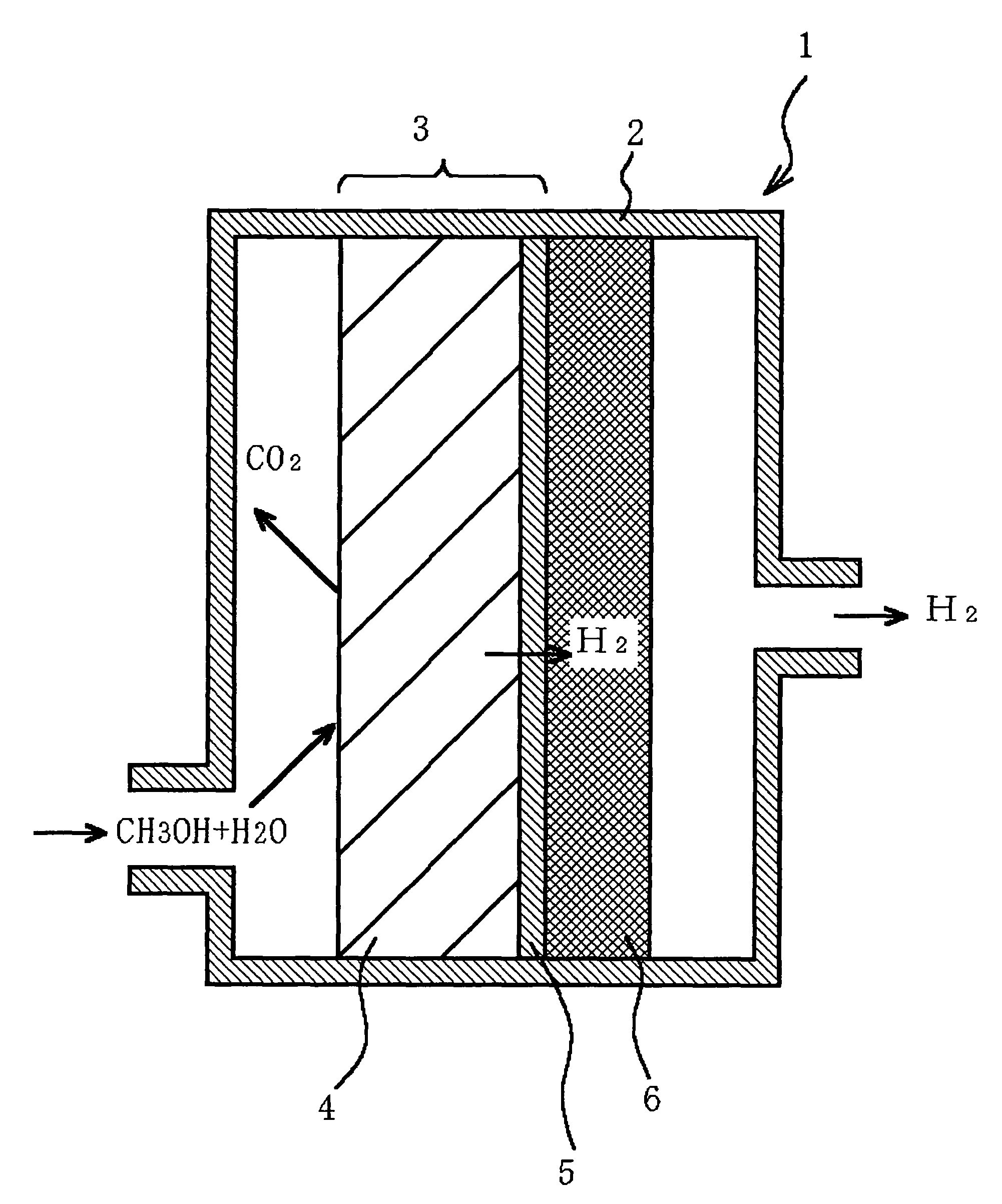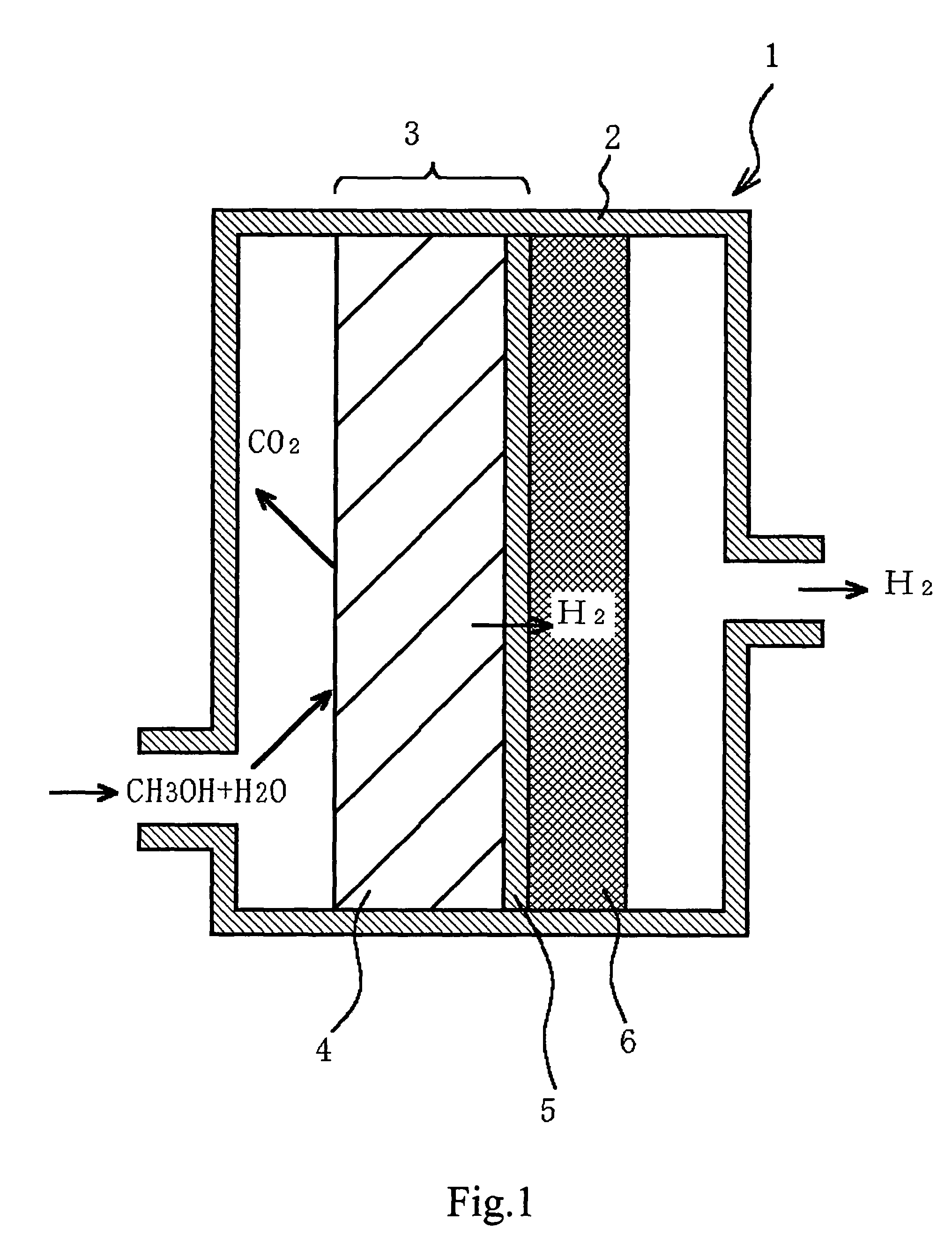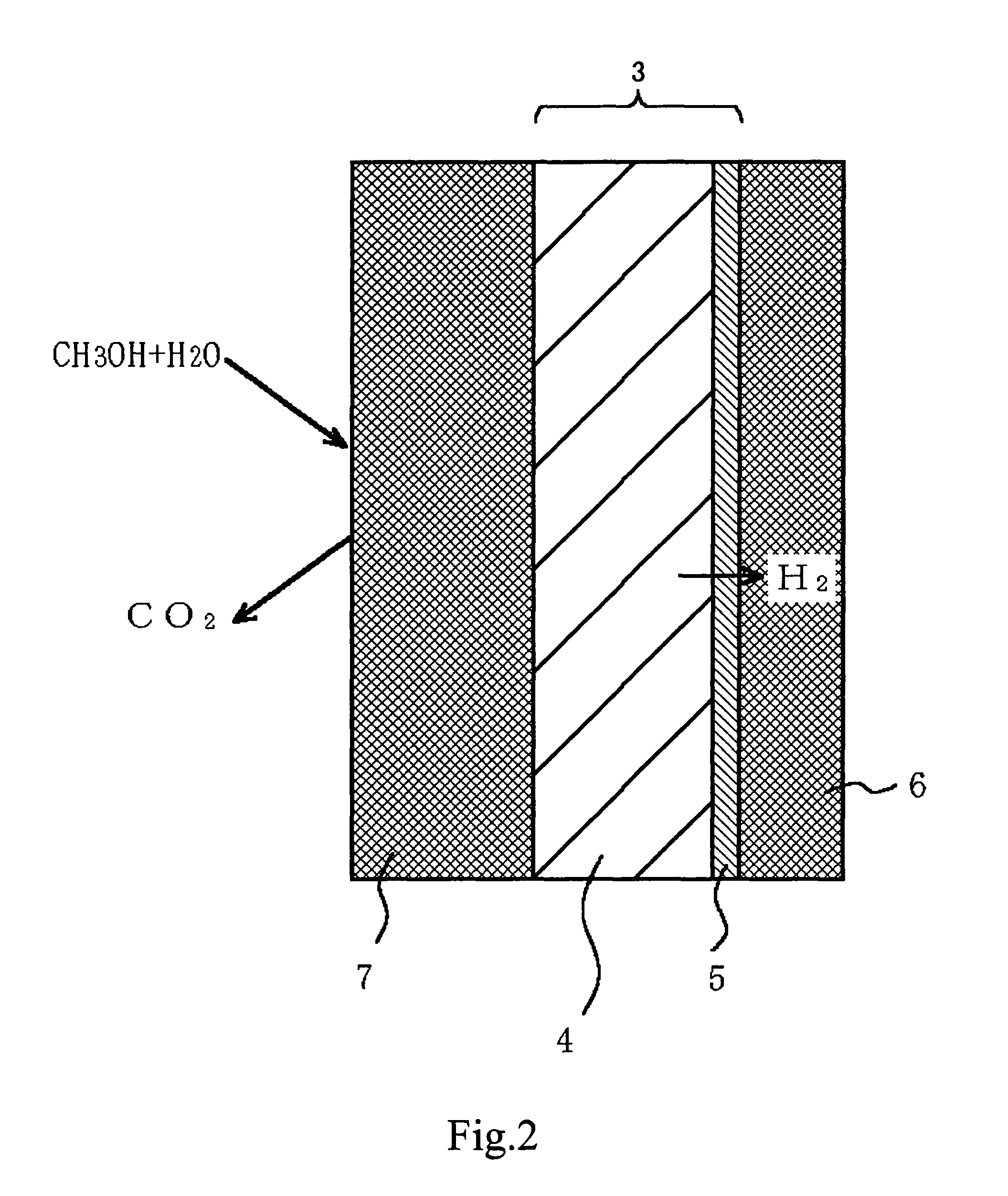Fuel reformer and method for producing the same, electrode for use in electrochemical device, and electrochemical device
a fuel reformer and fuel technology, applied in the direction of metal/metal-oxide/metal-hydroxide catalysts, final product manufacturing, metal/metal-oxides/metal-hydroxide catalysts, etc., can solve the problem of unsuitable use of hydrogen storage alloys, difficulty in achieving methanol concentration, and difficulty in the whole system to achieve a weight energy density far larger than that of a conventional secondary battery. achieve the effect of reducing the cost o
- Summary
- Abstract
- Description
- Claims
- Application Information
AI Technical Summary
Benefits of technology
Problems solved by technology
Method used
Image
Examples
example 1
[0127]A fluororesin and carbon powder were kneaded together in an aqueous solution to prepare a coating composition. The coating composition was applied to a porous carbon sheet, and then heated in an inert gas to a softening temperature of the resin or higher to form a water-repellent carbon coated layer on the carbon sheet as a gas diffusion layer.
[0128]Next, a Pt—Ru alloy catalyst carried on carbon was kneaded with an ionic conductor, such as perfluorosulfonic acid, to prepare a coating composition. The coating composition was applied to the above-described carbon sheet having the gas diffusion layer thereon to form a catalyst electrode for a fuel electrode. The coating weight was adjusted so that the Pt—Ru amount became 0.5 mg / cm2.
[0129]Similarly, a Pt catalyst carried on carbon was kneaded with an ionic conductor, such as perfluorosulfonic acid, to prepare a coating composition, and the coating composition was applied to another carbon sheet having the gas diffusion layer there...
example 2
[0137]A Pt—Ru alloy catalyst carried on carbon was kneaded with an ionic conductor, such as perfluorosulfonic acid, to prepare a coating composition, and the coating composition was applied to a PTFE (polytetrafluoroethylene) sheet called Teflon (registered trademark) and dried. Similarly, a Pt catalyst carried on carbon was kneaded with an ionic conductor, such as perfluorosulfonic acid, to prepare a coating composition, and the coating composition was applied to a PTFE sheet and dried.
[0138]The thus prepared catalyst electrode for the oxygen electrode and catalyst electrode for the fuel electrode were disposed on both sides of an ionic conductor film, such as a perfluorosulfonic acid film, and bonded together under pressure by means of a heated press, and then the above-mentioned PTFE sheets were peeled off, namely, in accordance with a so-called decalcomania process to produce an MEA for fuel cell.
[0139]Then, a reformer produced in a similar manner as in Example 1 was connected t...
example 3
[0143]A fluororesin and carbon powder were kneaded together in an aqueous solution to prepare a coating composition. The coating composition was applied to a porous carbon sheet, and then heated in an inert gas to the softening temperature of the resin or higher to form a water-repellent carbon coated layer on the carbon sheet as a gas diffusion layer.
[0144]Next, a Pt—Ru alloy catalyst carried on carbon was kneaded with an ionic conductor, such as perfluorosulfonic acid, to prepare a coating composition. The coating composition was applied to a carbon sheet having the gas diffusion layer thereon to form a catalyst electrode for a fuel electrode. The coating weight was adjusted so that the Pt—Ru amount became 0.5 mg / cm2.
[0145]Similarly, a Pt catalyst carried on carbon was kneaded with an ionic conductor, such as perfluorosulfonic acid, to prepare a coating composition, and the coating composition was applied to a carbon sheet having the gas diffusion layer thereon to form a catalyst ...
PUM
| Property | Measurement | Unit |
|---|---|---|
| thickness | aaaaa | aaaaa |
| thickness | aaaaa | aaaaa |
| thickness | aaaaa | aaaaa |
Abstract
Description
Claims
Application Information
 Login to View More
Login to View More - R&D
- Intellectual Property
- Life Sciences
- Materials
- Tech Scout
- Unparalleled Data Quality
- Higher Quality Content
- 60% Fewer Hallucinations
Browse by: Latest US Patents, China's latest patents, Technical Efficacy Thesaurus, Application Domain, Technology Topic, Popular Technical Reports.
© 2025 PatSnap. All rights reserved.Legal|Privacy policy|Modern Slavery Act Transparency Statement|Sitemap|About US| Contact US: help@patsnap.com



